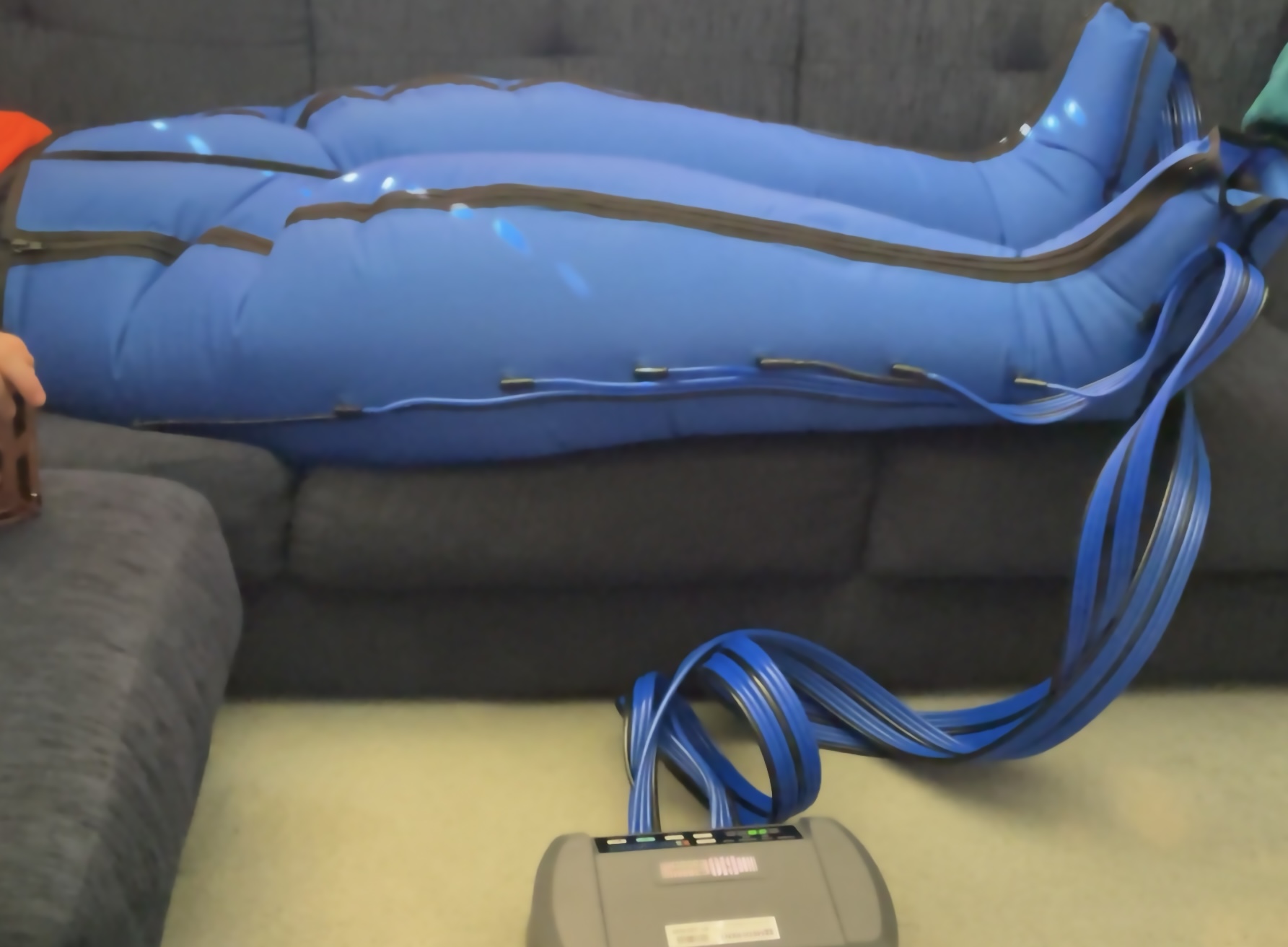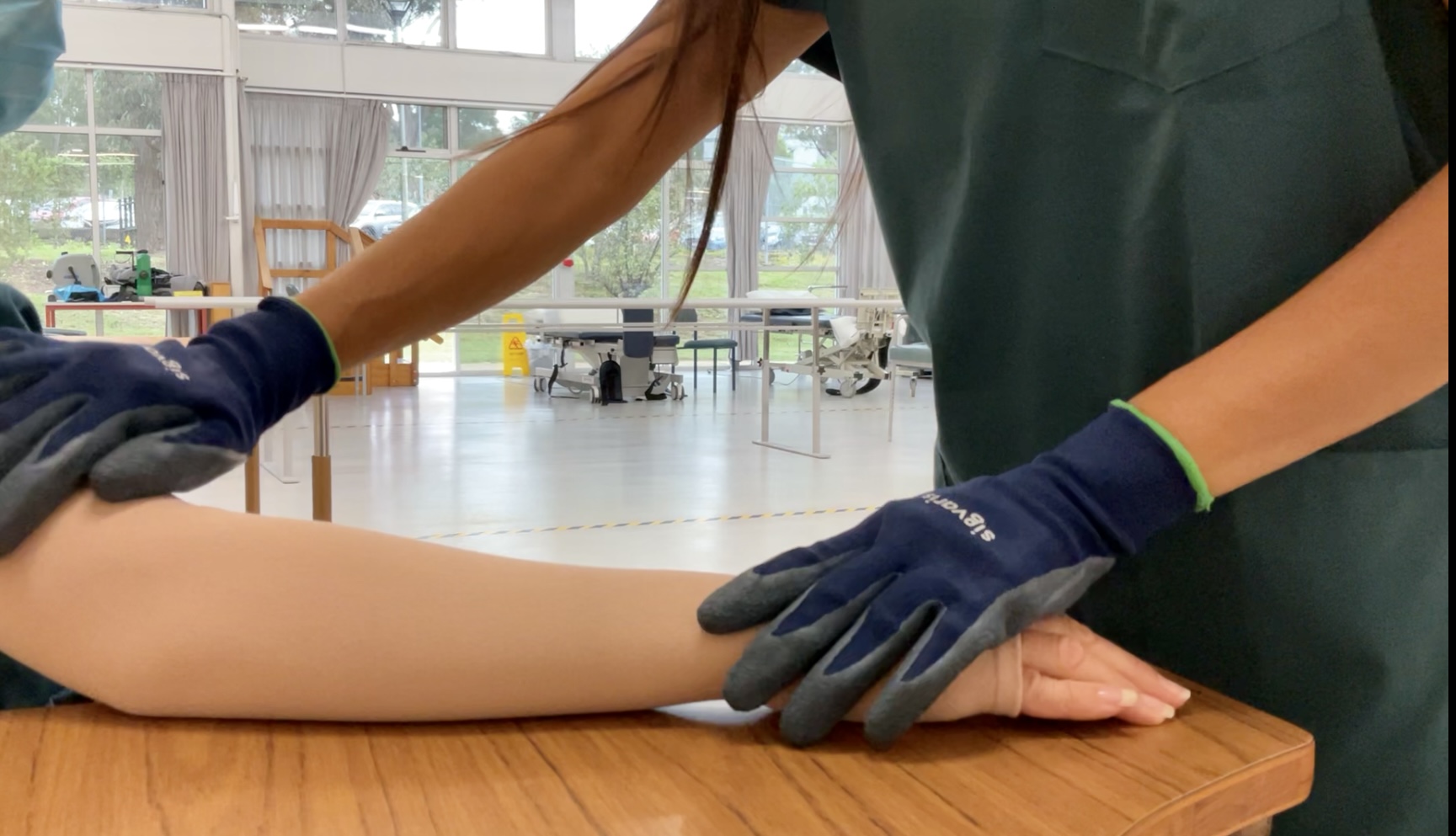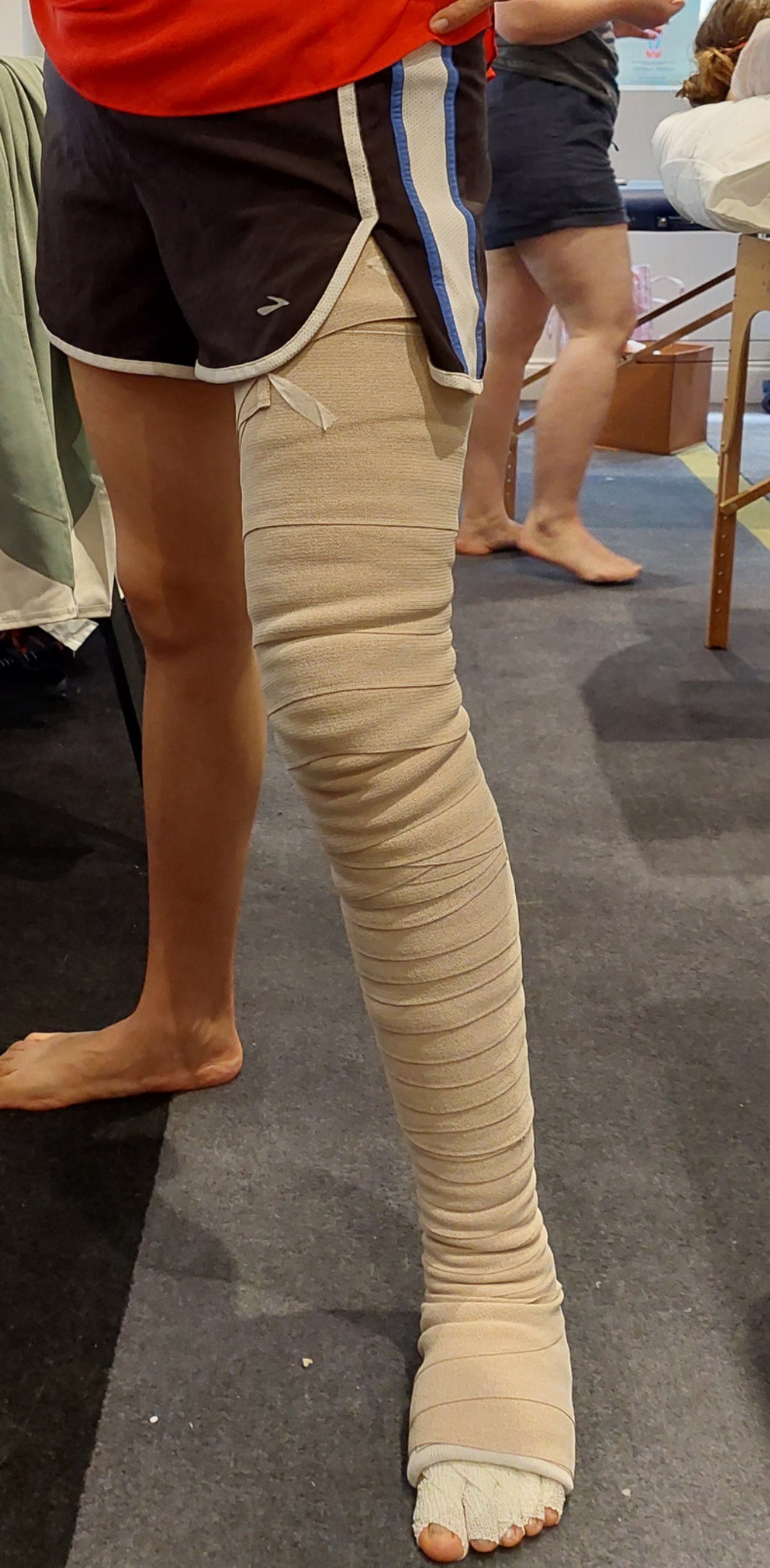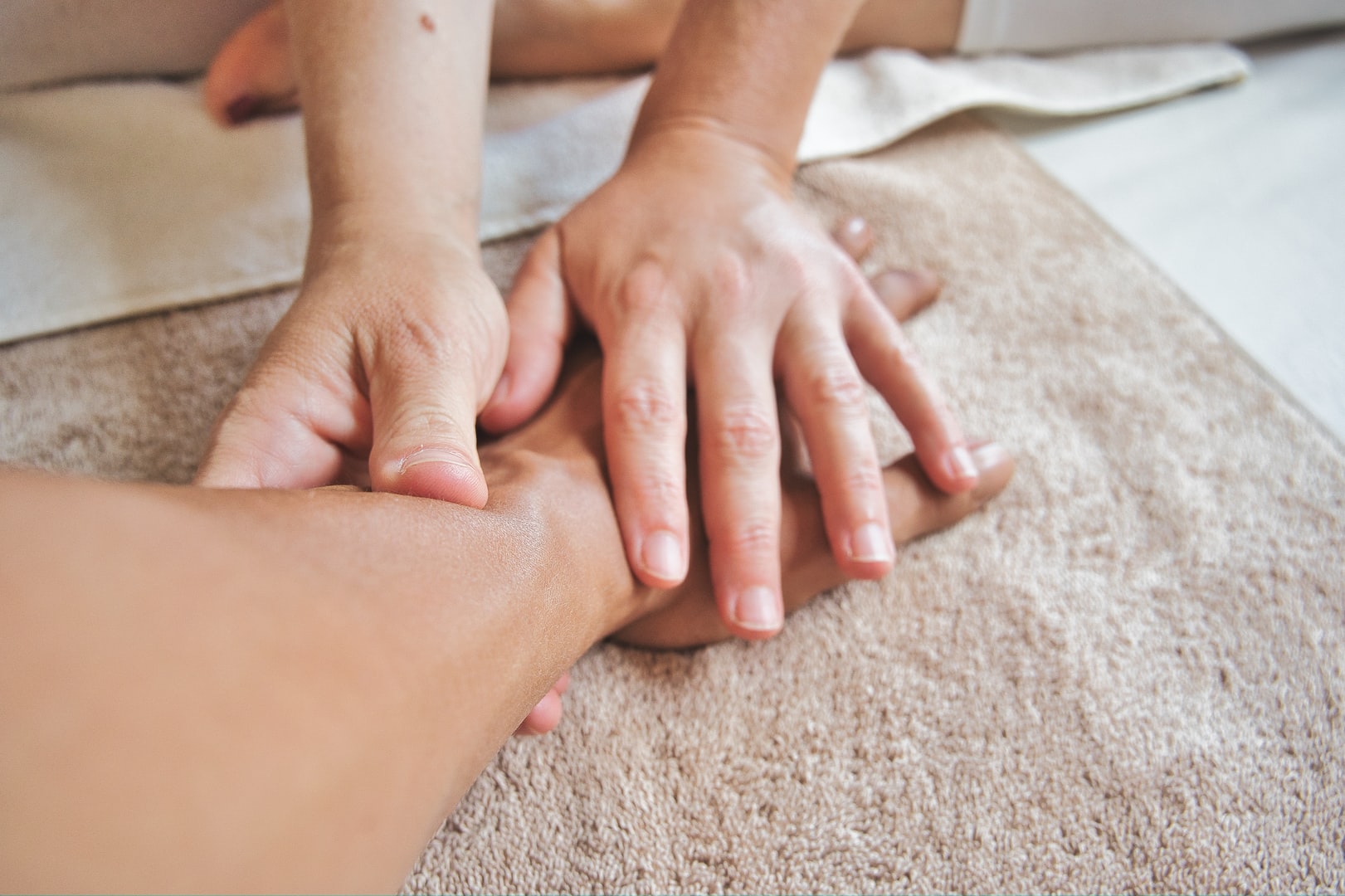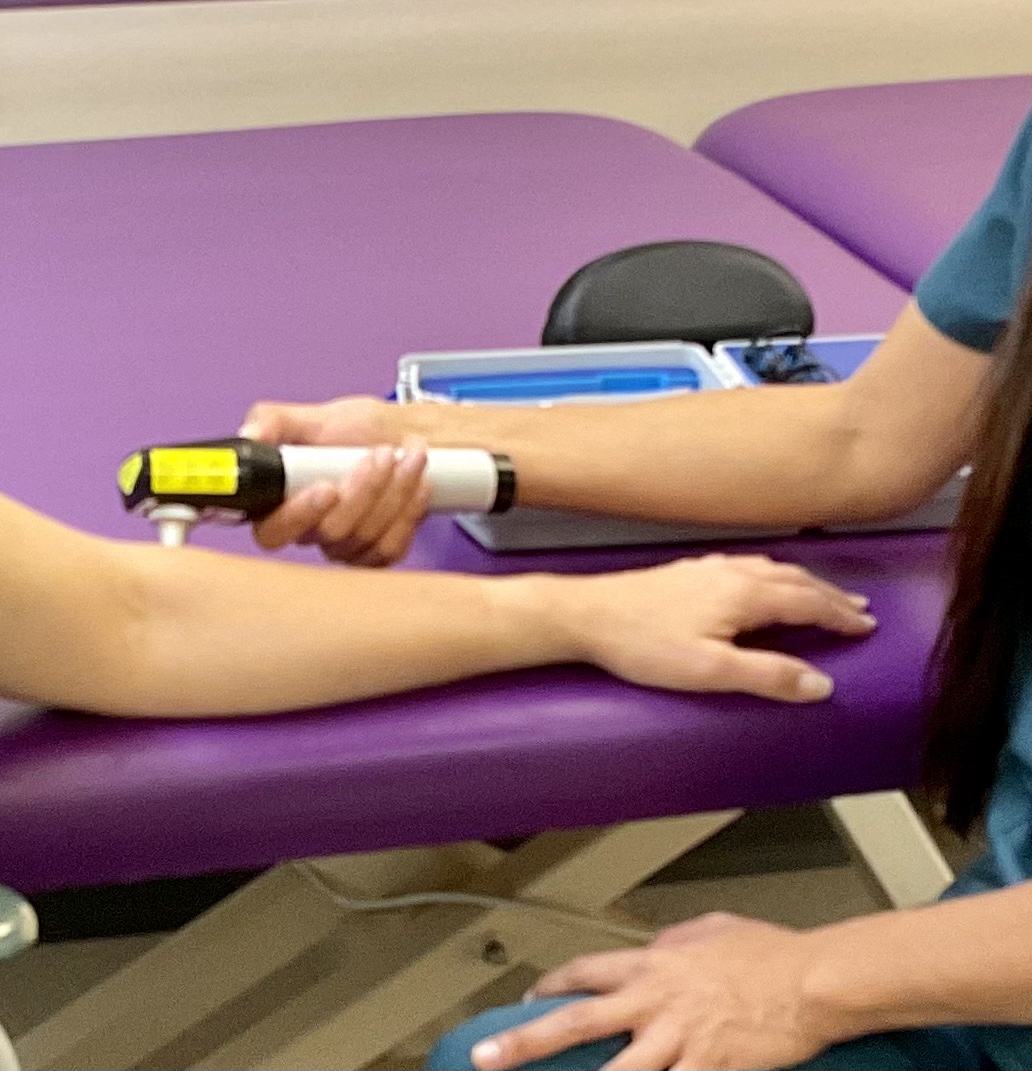Lymphoedema treatment
The Four Key Pillars of Lymphoedema Treatment
Lymphoedema management is based on four essential pillars, which help reduce swelling, improve lymphatic function, and enhance overall well-being. Some of these treatments can be self-managed, while others may require professional guidance. A combination of these approaches leads to better long-term outcomes.
1. Movement
Regular movement supports the lymphatic system by aiding the collection, transportation, and removal of lymphatic fluid. Unlike the circulatory system, the lymphatic system lacks a central pump, so physical movement is essential to stimulate lymph flow.
Movement doesn’t have to mean structured exercise—everyday activities like walking, reaching up to hang laundry, or doing heel-raises can be beneficial.
Gentle stretching, yoga, swimming, and low-impact activities can improve circulation without overstraining the affected area.
Patients should avoid excessive strain, prolonged immobility, or extreme fatigue, as these can worsen symptoms.
2. Skin Care
Proper skin care is crucial in preventing infections, particularly cellulitis, which is common in individuals with lymphoedema. Because lymphatic dysfunction can weaken immune defenses, even minor injuries can lead to complications.
The skin should be kept clean and well-moisturized to maintain its integrity and reduce the risk of cracks or wounds.
Protective clothing and gloves should be worn during activities like gardening or cleaning to avoid scratches or insect bites.
Sunburn and extreme temperatures should be avoided, as they can cause increased swelling and skin damage.
Any cuts, scratches, or injuries should be cleaned and monitored for signs of infection, such as redness, warmth, or pain.
3. Compression Therapy
Compression is a cornerstone of lymphoedema treatment, as it helps reduce swelling and maintain lymphatic flow. When used correctly, compression garments support the movement of lymph fluid and prevent fluid buildup.
Compression therapy includes garments (sleeves, stockings, gloves), bandages, or Velcro wraps, tailored to the patient’s needs.
The effectiveness of compression increases when combined with movement and activity, as this enhances fluid drainage through the lymphatic vessels.
Compression should be properly fitted by a specialist, as incorrect use can cause discomfort or complications.
Different types of compression garments exist for various stages and severities of lymphoedema, and adjustments may be needed over time.
4. Lymphatic Drainage (Manual Lymphatic Drainage - MLD)
Lymphatic drainage involves specialized massage techniques designed to stimulate the lymphatic system and encourage the movement of excess fluid.
Manual Lymphatic Drainage (MLD) is performed by trained professionals to redirect fluid from congested areas to healthier lymphatic pathways.
A simplified version of MLD can be taught to patients, caregivers, or family members to promote self-care between professional sessions.
Some patients may benefit from mechanical lymphatic drainage devices, which can assist in fluid movement when used appropriately.
The Importance of a Holistic Approach
These four treatment pillars are most effective when used together. For example, compression works best when combined with movement, and good skin care helps prevent complications that might interfere with other treatments. The more a patient understands and actively manages their lymphatic health, the better the treatment outcomes will be. Education, consistency, and a personalized approach are key to improving quality of life and minimizing the impact of lymphoedema.
